#Nala setu
Explore tagged Tumblr posts
Text
True History of God Kabir
Kabir Parmatma, as Munindra Rishi in Treta Yuga, healed Nala and Neela's incurable disease with his blessings, leading to the creation of the Ram Setu bridge.

1 note
·
View note
Text
True History of God Kabir
Kabir Parmatma, as Munindra Rishi in Treta Yuga, healed Nala and Neela's incurable disease with his blessings, leading to the creation of the Ram Setu bridge.
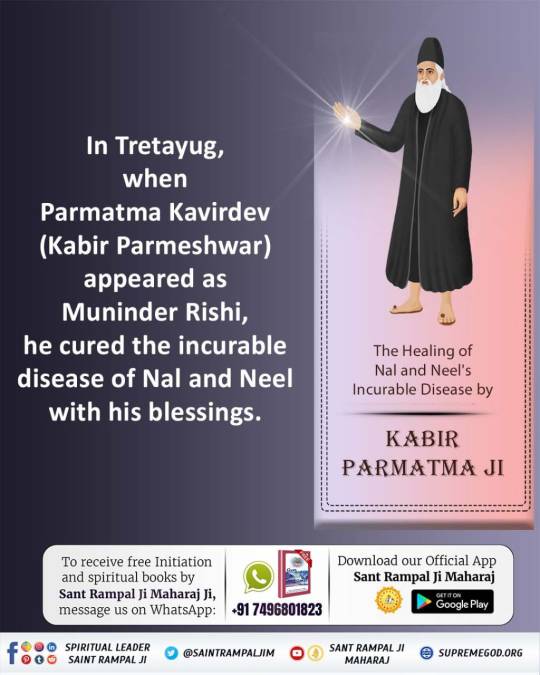
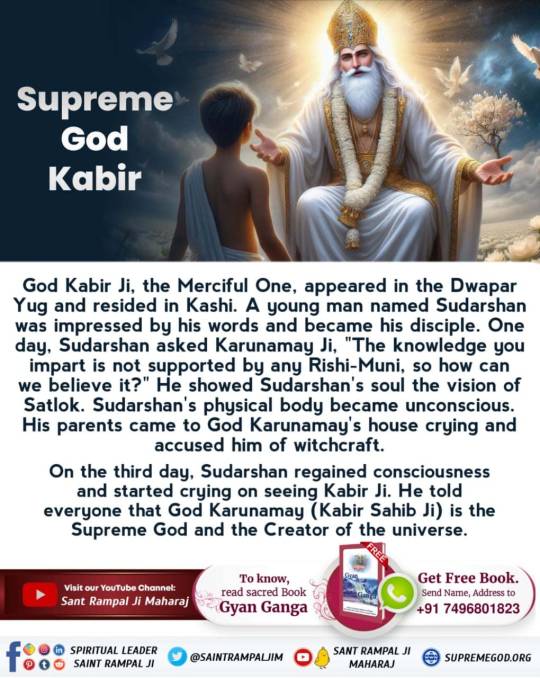
0 notes
Text
True History of God Kabir
Kabir Parmatma, as Munindra Rishi in Treta Yuga, healed Nala and Neela's incurable disease with his blessings, leading to the creation of the Ram Setu bridge.
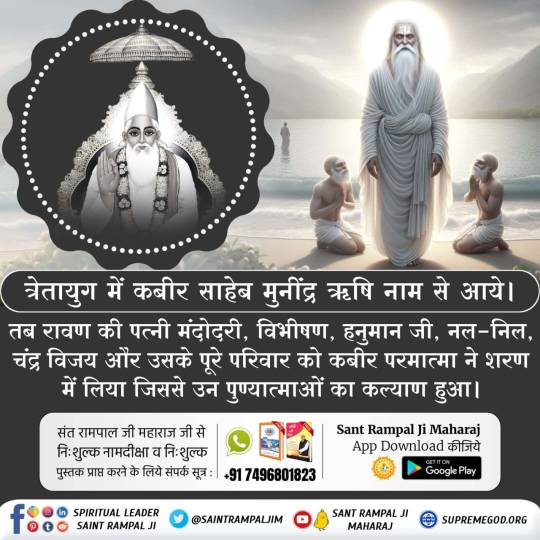
0 notes
Text
True History of God KabirKabir Parmatma, as Munindra Rishi in Treta Yuga, healed Nala and Neela's incurable disease with his blessings, leading to the creation of the Ram Setu bridge.
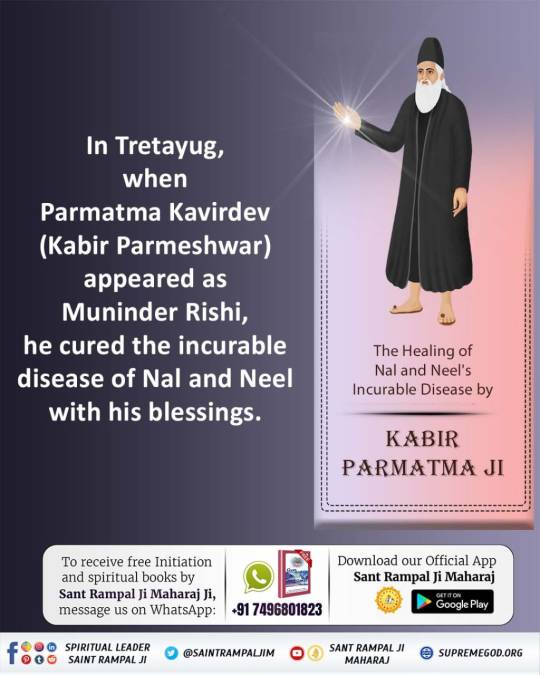
0 notes
Text
True History of God Kabir
Kabir Parmatma, as Munindra Rishi in Treta Yuga, healed Nala and Neela's incurable disease with his blessings, leading to the creation of the Ram Setu bridge.
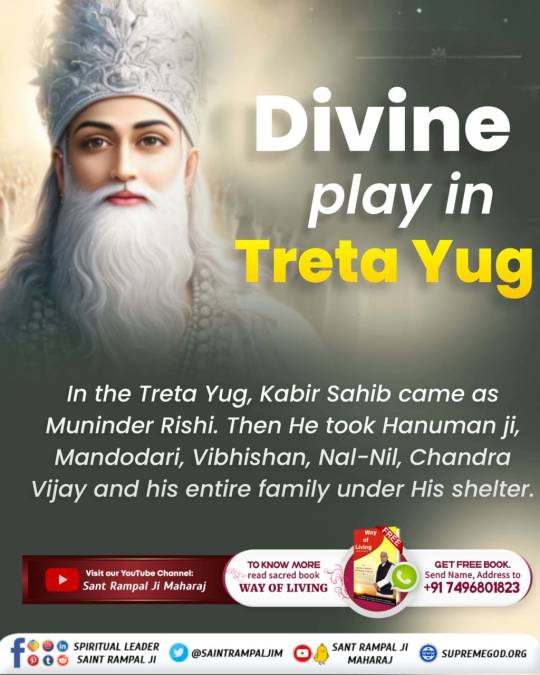
1 note
·
View note
Text
True History of God Kabir
Kabir Parmatma, as Munindra Rishi in Treta Yuga, healed Nala and Neela's incurable disease with his blessings, leading to the creation of the Ram Setu bridge.
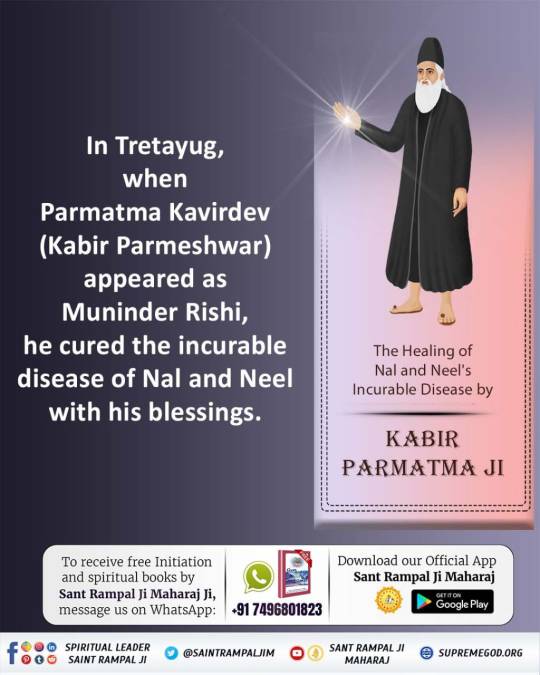
0 notes
Text
True History of God Kabir
Kabir Parmatma, as Munindra Rishi in Treta Yuga, healed Nala and Neela's incurable disease with his blessings, leading to the creation of the Ram Setu bridge.
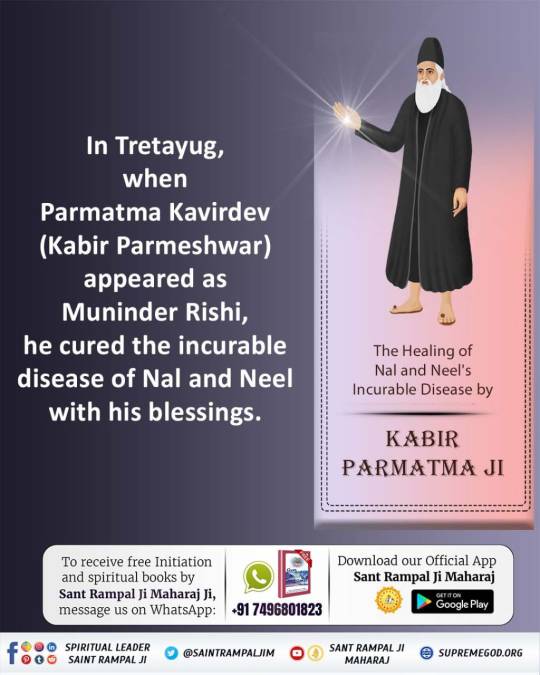
0 notes
Text
It is found in life systems in water and soil
It is found in life systems in water and soil
In every evolutionary process
the organism from which a new organism has come into existence
It has been seen that despite both species having common ancestors, both species were inseparable in existence.
Meaning of one if a new civilization is created
So the descendants of the past also continued their existence.
The biggest evidence of this is Lord Ram and Lord Ram's monkey army.
Well, during that Treta Yuga, there were different civilizations and cultures on both sides.
The proof of this is also that Nala Neel, two monkey youth from Lord Ram's monkey army, had explained this during the construction process of Ram Setu.
The existence of Ram Setu has been proved by our today's scientific community.
By the way, Ravana himself had made the sky a path with his Pushpak chariot.
Similarly, it was also said that Lord Krishna's brother Balram had married a girl of Treta Yuga.
who were rocket travelers in their time
Meaning, civilization is just a to-do list made by humans.
It's not like that
In olden days, along with humans, the civilization of many other creatures also existed.
The question is being asked here
Today our modern civilization has become like this
Is the civilization of the micro-species that are the ancestors of us humans still intact today in a larger form?
Otherwise, why is there so much excitement currently regarding mermaids?
What do mermaids symbolize spiritually?
Mermaid Symbolism and Spiritual Meaning!
Change and metamorphosis, representing the merging of two worlds and the potential for change and growth: mermaids are often seen as creatures of change, representing the potential for change and growth in our lives.
Were the ancestors of humans and mermaids the same group?
How do we know that the common ancestor of apes is not a mermaid? There is no evidence that any species that could accurately be described as a mermaid or merman ever existed. Apes (including humans, who are themselves apes) are members of the order Primates, suborder Haplorini, family Hominidae. 1 April 2021
Can separate civilizations of the suborder Haplorini, family Hominidae live in today's world?
Hominidae
Wikipedia
https://en.wikipedia.org › wiki › Hominidae
The Hominidae (/hɒˈmɪnɪdiː/), whose members are known as the great apes[note 1] or hominids (/ˈhɒmɪnɪdz/), are a taxonomic family of primates that includes eight extant species in four genera: Pongo (the Bornean, Sumatran and Tapanuli orangutan); Gorilla (the eastern and western gorilla); Pan (the chimpanzee and the bonobo); and Homo, of which only modern humans (Homo sapiens) remain.[1]
Numerous revisions in classifying the great apes have caused the use of the term hominid to change over time. The original meaning of "hominid" referred only to humans (Homo) and their closest extinct relatives. However, by the 1990s humans, apes, and their ancestors were considered to be "hominids".
Are other hominids alive today?
Homo sapiens is currently the only member of the genus Homo alive. There's only one species of human—but it wasn't always so.22 Sept 2021
Are humans the only living members of the family Hominidae?
Biology. Great apes are a taxonomic family of primates classified as Hominidae and include seven living species in four genera: chimpanzees and bonobos (Pan), gorillas (Gorilla), orangutans (Pongo), and humans (Homo).
Whatever it is, this is what we are seeing today in the world, we are the ones who are waking up the good morning.
Whether chimpanzees, bonobos, gorillas, orangutans still exist in the world
But this is what the extensive agenda of us humans says
the world is with the world
we have woken up good morning
Translate Hindi
यह पानी में और मिट्टी में जीवन प्रणाली में से पता पड़ता है
हर किसी इवोल्यूशनरी प्रोसेस में
जिस जीव में से एक नए जीव की अस्तित्व बना है
सदियाँ से दिखे गए दोनों प्रजाति की पूर्वज एक होते हुए भी दोनों प्रजाति ही अस्तित्व में अटूट थे
मतलब एक का अगर सिविलाईजेशन नया बना है
तो बीतें का वंशक भी अपना अस्तित्व कायम रखे थे
इसका सबसे वृहद एविडेंस भगवान राम और भगवान राम की वानर सेना है
वैसे उस त्रेता यूग की समय में दोनों तरफ अलग अलग सभ्यता संस्कृति थे
इसका प्रमाण भी भगवान राम की वानर सेना में से नल नील दो वानर यूवा समझा चुके थे राम सेतू निर्माण प्रकृया में
जिस राम सेतू की अस्तित्व को हमा��ी आज की वैज्ञानिक वर्ग प्रमाण कर चुके है
वैसे खुद रावन जिसने आकाश को मार्ग बनाया था अपनी पुष्पक रथ द्वारा
उसी तरह कुछ ऐसा भी बोला गया था भगवान कृष्ञ भ्राता बलराम शादी किए थे त्रेता यूग की एक युवती को
जिन्होने उनकी समय में रॉकेट भ्रमणकारी थे
मतलब सभ्यता सिर्फ इंसानों की ही बनी बनाई कर्मसुची है
ऐसा नहीं है
पुराने दिन में इंसानों की साथ साथ कई और जीवों की भी सभ्यता कायम थी
प्रश्न यहां पर बन रहा है
आज की हमारी आधूनिक सभ्यता इस तरिके का बन चुका है
क्या जिस माइक्रो स्पेसिस हम इंसानो की पूर��वज है उनकी भी सभ्यता आज बड़े आकृति बनकर बरकरार है
वरना इतने हलचल क्यों है वर्तमान में मरमेड को लेकर
जलपरियाँ आध्यात्मिक रूप से किसका प्रतीक हैं?
जलपरी प्रतीकवाद और आध्यात्मिक अर्थ!
परिवर्तन और कायापलट, दो दुनियाओं के विलय और परिवर्तन और विकास की क्षमता का प्रतिनिधित्व करते हैं: जलपरियों को अक्सर परिवर्तन के प्राणियों के रूप में देखा जाता है, जो हमारे जीवन में परिवर्तन और विकास की क्षमता का प्रतिनिधित्व करते हैं।
मनुष्य और जलपरियों का पूर्वज क्या एक ही गोष्ठी थे
हमें कैसे पता चलेगा कि वानरों का सामान्य पूर्वज जलपरी नहीं है? इस बात का कोई सबूत नहीं है कि ऐसी कोई प्रजाति जिसे सटीक रूप से जलपरी या जलपरी के रूप में वर्णित किया जा सके, कभी अस्तित्व में थी। वानर (मनुष्यों सहित, जो स्वयं वानर हैं) प्राइमेट्स क्रम, उप-आदेश हाप्लोरिनी, परिवार होमिनिडे के सदस्य हैं। 1 अप्रैल 2021
क्या उप-आदेश हाप्लोरिनी, परिवार होमिनिडे की अलग सभ्यता आज की दुनिया में रह सकता है
होमिनिडे
विकिपीडिया
https://en.wikipedia.org ›विकी› होमिनिडे
होमिनिडे (/hɒˈmɪnɪdiː/), जिनके सदस्यों को महान वानर के रूप में जाना जाता है [नोट 1] या होमिनिड्स (/ˈhɒmɪnɪdz/), प्राइमेट्स का एक वर्गीकरण परिवार है जिसमें चार प्रजातियों में आठ मौजूदा प्रजातियां शामिल हैं: पोंगो (बोर्नियन, सुमात्राण और तपनुली ओरंगुटान); गोरिल्ला (पूर्वी और पश्चिमी गोरिल्ला); पैन (चिम्पैंजी और बोनोबो); और होमो, जिनमें से केवल आधुनिक मानव (होमो सेपियन्स) ही बचे हैं।[1]
महान वानरों को वर्गीकृत करने में कई संशोधनों के कारण होमिनिड शब्द का उपयोग समय के साथ बदल गया है। "होमिनिड" का मूल अर्थ केवल मनुष्यों (होमो) और उनके निकटतम विलुप्त रिश्तेदारों को संदर्भित करता है। हालाँकि, 1990 के दशक तक मनुष्यों, वानरों और उनके पूर्वजों को "होमिनिड्स" माना जाने लगा था।
क्या अन्य होमिनिड आज जीवित हैं?
होमो सेपियन्स वर्तमान में होमो जीनस का एकमात्र जीवित सदस्य है। मानव की केवल एक ही प्रजाति है—लेकिन हमेशा ऐसा नहीं था। 22 सितंबर 2021
क्या मनुष्य होमिनिडे परिवार के एकमात्र जीवित सदस्य हैं?
जीवविज्ञान। महान वानर होमिनिडे के रूप में वर्गीकृत प्राइमेट्स का एक वर्गीकरण परिवार हैं और इसमें चार प्रजातियों में सात जीवित प्रजातियां शामिल हैं: चिंपैंजी और बोनोबोस (पैन), गोरिल्ला (गोरिल्ला), ऑरंगुटान (पोंगो), और मनुष्य (होमो)।
जो भी है यह तो आज हम देख रहे है जग में हम ही तो सुप्रभात जगा रहे है
चाहे चिंपैंजी बोनोबोस गोरिल्ला ऑरंगुटान कोई भी अभी भी अस्तित्व हो जग में
मगर हम इंसान की व्यपक कर्मसूची यही कह रहा है
जग है जग के साथ
हम है जगाया सुप्रभात
1 note
·
View note
Text
Post # 131
A bridge, its history and its mythology...
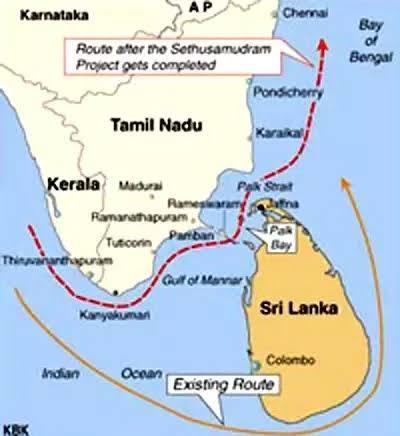
In 1860, a British Indian Naval Officer, Alfred Dundas Taylor, proposed that the time and distance taken by ships traveling from the west coast of India to its east coast and vice versa could be cut down significantly, if a sufficiently wide and deep passage was made connecting the Gulf of Mannar and The Palk Strait, separating the Indian mainland from Sri Lanka. Because of the shallow waters in the Gulf and the Strait, ships had to circumnavigate 400 nautical miles more, around Sri Lanka, taking them upto 30 more hours and a commensurate increase in cost. From 1860 till Indian independence in 1947, nine proposals were made and evaluated. But no action was taken.
In 1955, the independent Indian government set up a committee called the Sethusamudram Project Committee. After evaluating the costs and benefits, this committee found the project feasible and viable. Five more proposals and technical reports followed. But no action still, till 2005, when Dr. Manmohan Singh, the then Prime Minister, inaugurated the project, 145 years after the original proposal was made.
The project, budgeted at INR 2600 crores, was supposed to take 3 years, and was supposed to dredge a canal 165 km long, 300 meters wide and sufficiently deep to let cargo ships traverse that route.
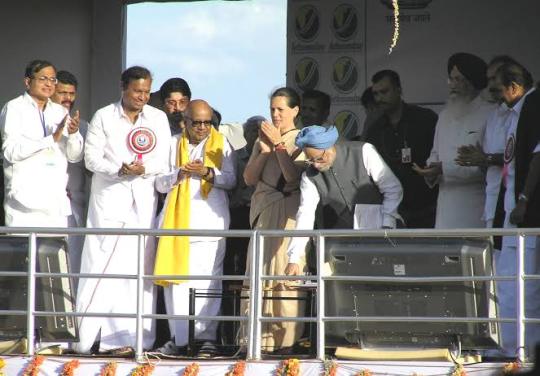
Today is 2020. Fifteen years have passed and still no Setusamudram canal. Why? Because, right from its inception, the project had a few issues:
1. About 65 % of the ships in that area come from Africa and Europe. For them, the time saving was not 30 hours, but just 8 hours.
2. The channel could take only 30000 tonnage vessels. But most of the new ships, which are of 60000 tonnage and tankers, which are 150000 tonnes or more, cannot use the canal.
3. The project would disturb the ecological balance and destroy corals and kill marine life. It would also destroy conch trade worth INR 150 crores annually.
But the biggest issue was - the Sethusamudram canal would cut through and destroy what was left of the mythological Ram Sethu or Adam's bridge. And that would be disastrous to the political fortunes of the government that did that.
So what exactly is the story of the Ram Sethu or Adam's bridge? And why is it so sensitive? Therein lies a tale.
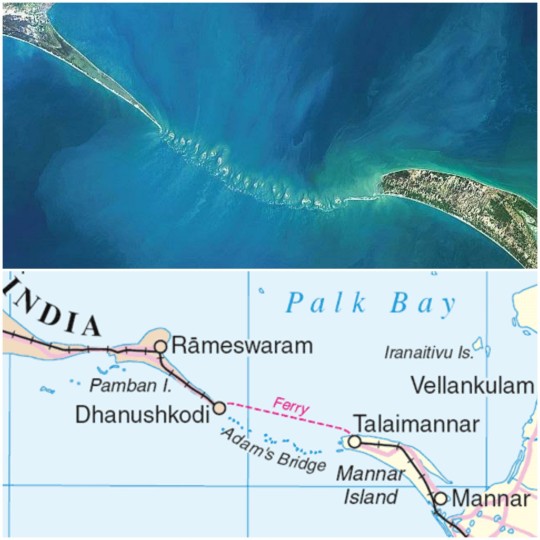
The Ram Sethu is today, a 50 km long chain of limestone shoals, between a village called Dhanushkodi, on Rameswaram Island (also called Pamban Island), in Tamil Nadu, India, and another village called Talaimannar on Mannar Island, in Sri Lanka. The bridge is believed to have been made by Lord Rama and his Vanara army to reach Lanka and rescue his wife, Sita from the evil king, Ravana. The Sri Lankan muslims, on the other hand, believe that Aadhaam, their first Islamic leader, walked over this bridge by foot from India to Lanka and thus this bridge has a holy connotation for them. Aadhaam got morphed to Adam, because the British found it easier to pronounce. Hence, this bridge was also called Adam's bridge. But for most Indians, especially Hindus, this bridge is Rama Setu or Nala Setu (because it was built by Nala, the architect-monkey in Rama's army).
That makes it mythological, right? Why worry about mythology in the 21st century?
Because that also makes the issue religious. In India, religious issues become political issues. Right wing parties like BJP and organizations like VHP put their foot down and said, "How can you break a bridge built by Ram?" Secular parties said, "Since Ram is mythological, Ram Sethu is mythological too."
I also grew up believing Ram and Ramayan to be undoubtedly mythological. But recently, I read a book called Historical Ram, written by D K Hari and his wife, D K Hemahari (who run an organization called Bharat Gyan), wherein they attempt to provide scientific and logical proof that Ram and Ramayan are historical.
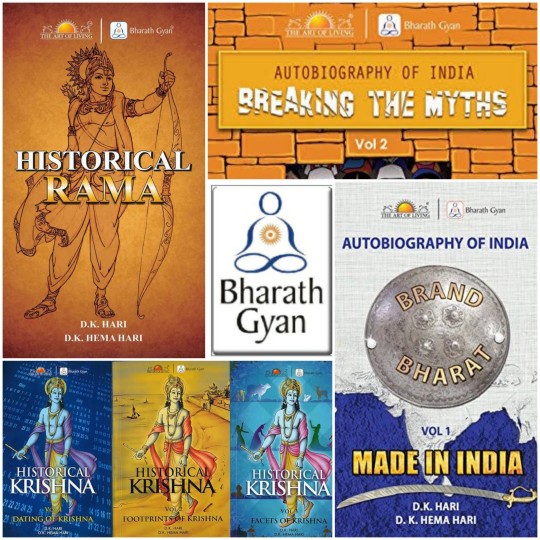
The various arguments they put forward are as follows:
1. They say Ramayana and Mahabharata are called Itihasa in Sanskrit. Itihasa = Iti + hasa. Meaning - It happened like this = History.
They say that until the British came to India, Ramayana and Mahabharata were indeed considered to be have happened. The British classified these epics as mythology.
2. They use a technology called archaeo-astrology and make some powerful propositions. Archaeo-astrology is a technique of charting the future or past sky using a scientific tool called planetarium software. This tool helps to arrive at planetary positions, given a date in future or past. Vice-versa, given a set of planetary configurations, the tool can help identify the date in future or past, when the planetary configuration will or could have occurred.
This software was apparently developed by NASA to estimate the planetary positions of Voyager missions that would take 10-12 years to reach their destinations. Now, declassified, it is available for public use. Reminds me of how the internet was a classified invention of the US defence before it was made publicly available.
The authors refer to one Mr. Pushkar Bhatnagar, who used the original Sanskrit text of Ramayana and this technique to date the era of Lord Ram. For example, the birth of Rama is explained in detail by Valmiki.
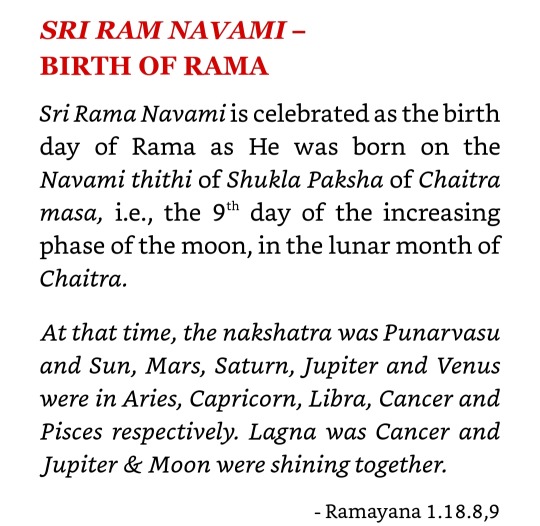
This information, when fed into the software, tells us that Ram was born on 10th January, 5114 BC, at 12.30 pm, as per the Gregorian calendar!
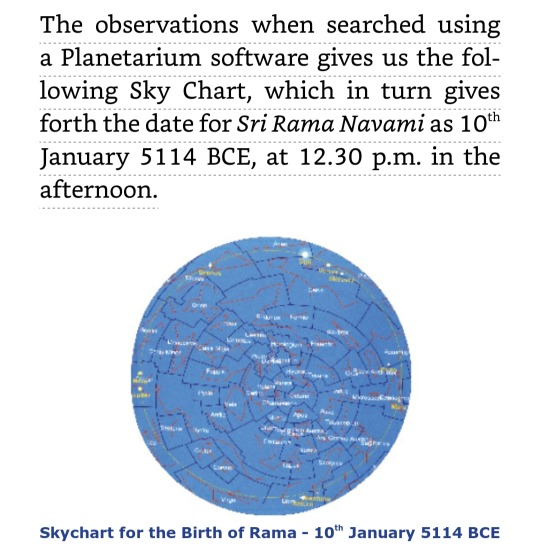
This way, all major events in Ramayan were dated. Fantastic, isn't it?

Notice how the dating shows that Ram gets exiled when he was 25 years old, and how the Khar-Dushan episode happens in the 12th year of exile. Pretty consistent results, eh?
3. The geographic locations in Ramayan are actual places that exist even today - some of them have the same names then and now.

4. There is one school of thought that says that Ram Setu could be a natural phenomenon. The book refutes this possibility by saying that the layers of the bridge are so discrete that they can only he man-made.

None of these arguments are conclusive by themselves. But honestly guys, put together, there is a strong case that, after all, Ram and Ramayan may not be mere mythology. Maybe they are history - Itihas!
If they are, I would agree with Dr. Hari and his wife that Ram Sethu should be a protected monument. I will join them in demanding for a UNESCO world heritage site declaration for this piece of geography. Already in the past 500 years, a large part of it was lost to a cyclone. It is said that till 1480 AD, the bridge was a meter over sea level and one could walk from India to Sri Lanka over it.

And I look forward to the current BJP led NDA government and its minister, Nitin Gadkari's proposal that a bridge should be made from India to Sri Lanka, instead of a canal. This fits beautifully with this government's Look East foreign policy, whereby they are connecting all our neighbouring countries, as a counter to China and its aggressive intent.
#alfred dundas taylor#Sethusamudram project#Sethusamudram canal#bharat gyan#adams bridge#historical rams#d k hari#d k hemahari#rama#mythology#look east#archae astrology#dating of ram#planetarium software#Itihasa#history#rameshwaram#Dhanushkodi#talaimannar#Nala setu#rama setu
10 notes
·
View notes
Text
Adam's Bridge in Tamilnadu
The bridge is made of coral reefs with floating volcanic rocks. From a nature lover’s perspective, it is surprising how such a formation of reefs and rocks could have existed for such a long time. Book your stay with us at the Hotel Rameswaram Grand to visit Rameshwaram tourist places in Tamil Nadu.
#Adam's bridge#bridge between srilanka and india#floating stone bridge#Nala Setu Bridge#oldest bridge in rameshwaram#Ram Setu Bridge
0 notes
Photo


anon requested: Rama Setu as a Symbol of Love
(tagging some mutals that might like this: @incurablescribbler @1nsaankahanhai-bkr @soniaoutloud @panchali @chaanv) (Also in AO3)
Rama had never seen the sea before. He'd grown in faraway Ayodhya, in the kingdom of Kosala, that had no exit to the sea. Later, during their exile, he'd crossed plains, mountains, and jungles, but the largest bodies of water he'd come across had been rivers. As they started making their way southwards, Lakshman had once asked how much farther south were they planning to go. The terms of their exile hadn't been clear in that regard. "As far as we can," Rama replied. "Maybe we'll reach the end of Bharatavarsha and find the sea," Sita added, trying to infuse a sense of adventure to a journey that none of them had wanted. Rama smiled at her fondly, "Maybe."
Back then the prospect seemed nice – to take a walk on a golden beach, leaving footprints in the sand and watching the gentle ebb and flow of the tides – but as with everything else, there was no joy in it without Sita.
The sight of the sea, in all its unimaginable vastness, only filled him with a terrible sense of helplessness. The vanaras, who had also never seen it, trembled in fear and despair when they reached the shore. "We've reached the edge of the world!" they cried. Rama knew from his lessons at Rishi Vasishtha’s gurukula that such thing was ridiculous, the world didn't have an edge. But it could may as well had been true. It seemed they had reached the end of their search, without having found Lanka, and Sita.
Then, an old vulture called Sampati heard them mention his brother - the valiant Jatayu who'd been mortally wounded trying to save Sita, but lived long enough to point the direction she'd been taken - and offered to help. His atrophied wings couldn't lift him up anymore, but with his sharp eyesight, he looked beyond the horizon and at the distance he saw an island, and in that island, a golden city: Lanka. "If I still could, I would go there myself and find her for you," he told Rama. "But as you see, I cannot fly." And neither can bears or monkeys, Rama thought dejected.
He'd been wrong, though. As it turned out, there was one monkey that could. A monkey that could do the impossible, but couldn't remember his greatness until it was needed the most. When everything seemed lost, Hanuman did a miracle. He increased his size, becoming bigger and bigger until he towered like a mountain, his head scraping the clouds. Then, with a great leap that shook the earth, he rose to the sky, casting his large shadow over the entire beach bellow, and flew off towards Lanka, carrying all of Rama's hopes with him.
~•~•~•~•~
A full day passed without Hanuman returning, and Rama was growing more and more anxious. All his life he'd believed himself to be a very patient man, but this ordeal was greatly testing his limits. He sat by the shore, staring into the distant line where the ocean met the sky. He longed for Sampati's vision, to see beyond that limit, and know what had come of his vanara friend.
More than ever, his thoughts kept returning to his wife. He hadn't known - he'd thought he did, but truly he hadn't - just how much he loved her. How much better her presence made his whole existence. In the hardest of times, she'd given him a reason to laugh, to hope, to dream. She turned an exile that should have been the worst years of his life, into some of the best. And now she was gone, and he felt so utterly lost and lonely. And guilty as well, for having failed to protect her, for having brought her with him in the first place. Although he knew that he couldn’t have stopped her from following him.
Not that he hadn't tried, but she was a stubborn one. She rebuked every argument, rejected all reasoning, and stayed firm in her conviction that her place was at his side, no matter where he was. She promised she would take care of herself, not burdening him at all. And when he still argued against it, she reached the heart of the matter: “Is it that you don't want me at your side?”
No. It was exactly the opposite. He desperately wanted her at his side. The harshness and danger of the forest life didn't strike him as bad as the loneliness of it. But that wasn't a good enough reason to drag her along, like a child dragging along his favorite blanket to give him comfort. She wasn't his property, she was his responsibility. At least he knew Lakshman could defend himself, but he didn't know if he could ensure her safety out there.
"What if you get hurt? What if you get lost?" He insisted. "I'm not so delicate. Don't expect me to trip with every pebble on the way. And if I got lost, then I would find my way back to you." She locked eyes with him. "I would go through hell to find you." At that, knew nothing would stop her from follow him, because she wasn't just doing it out of duty. He realized then the deep of her love for him.
Did she know the deep of his love for her? Hard to say, since he wasn't one the show it. He was always keenly aware of their station in life, even in the forest. They were the rightful king and queen of Ayodhya, and he considered the overemotional display of romantic affection to be below their dignity. And in any case, it wasn't in his nature. He'll rather show his love through respect, through service, through protection (although he'd failed miserably at the latter).
But when he lost her, something broke inside of him, shattering his composure. He'd wept and despaired, wandering the forest crying out for his beloved like any forlorn lover. In an ironic reversal of roles, Lakshman had to ask him to remain cool-headed. Falling into desperation wouldn't get him closer to Sita.
He listened to his little brother, and focused instead on the single-minded goal of getting her back – and of slaying the trice-dammed rakshasa that had kidnapped her. He'd taken all that anguish and buried it deep within himself, but with every day that passed without her, it threatened with bursting out. He could feel it eating at his gut now, as he looked at the distant line where the ocean met the sky and waited for a sight of his vanara friend.
And sooner rather than later, he got it. First, it was a tiny spot in the sky that grew larger and larger as it approached, until he could clearly see Hanuman returning.
~��~•~•~•~
Hanuman didn't disappoint him. He'd found his wife and even managed to speak with her. And he brought her hairpin and a story known only to the couple as proof of the meeting. But all the proof Rama needed was the reverence and admiration with which he spoke of her. Nobody who had known his Sita could fail to admire her.
Hanuman told him of his Sita: sited in a garden of Ashoka trees, refusing to enjoy the luxury of her captor's palace, bullied by her guards and harassed by Ravana, but unyielding to any threat. Showing her fortitude while waiting to be rescued, growing sadder by the day, but never letting it show, and never losing hope that her Rama was coming for her. And he was. Now that he was certain that Sita was beyond the sea’s great expanse, nothing was going to stop him from reaching her.
He regretted that he didn't have anything – not even words – to give Hanuman that would demonstrate his gratitude for what he'd done for him. So he simply embraced him, like a brother. For the vanara had become as dear to him as one.
Now it came the matter of how their army would cross the sea to Lanka. Rama sat in council with Lakshman, Sugriva, Jambavan, Angad and Hanuman to discuss it. The most obvious option was to build boats, but doing so would require a lot of time and expertise that they simply didn't have. Other options were proposed – some plausible, other fantastical – but at the end Rama decided that if they couldn't find a way across the sea, then maybe the sea could make way for them. The most fantastical of options, perhaps, but he could try asking.
For several days and nights, he sat upon the beach fasting and reciting mantras, praying to Varuna, the Lord of the Oceans. But the only answer he received was the roaring of the waves. His frustration began to mount. Where before the sea seemed like an endless stretch, now he saw it as an irritating block in his path that only serve to keep him idle when he could have been battling Ravana and his army. A burning rage began to boil inside him, and at last reached the end of his patience.
He commanded Lakshman to bring him his bow and quiver, and began firing burning arrows at the sea. Those terrible ashtras caused the water to steam and boil, filling the surface with the dead carcasses of aquatic creatures. He placed one last arrow on his bow. "Varuna!" He shouted. "This arrow of mine will scorch every drop of you, until the oceans of these earth turn into barren deserts! Unless you come and face me!" He took aim, ready to shoot. "Well?!"
The sea swelled and swirled, spiralling inwards into a whirlwind, and from its midst he appeared. Lord Varuna rose from the waters with a great makara as his vahana; his skin was of a bright cerulean hue, his ornaments were made of seaweeds and pearls and seashells, and in his hands, he carried a noose and a fishing net.
"Lord Ramachandra," his voice boomed over the clashing of the waves. "Don't act rashly. From the ocean comes the salt, the fish, and the rain. If you destroy it, the whole of creation will suffer. "
Rama kept his arrow pointed at the ocean. "If you part the sea for my army to cross, then I'll have no reason to destroy it."
"The fire's nature is to burn, the wind's nature is to blow, and the nature of the ocean is to be deep and expansive and impassable. I cannot change my nature for you." Lord Varuna sounded apologetic enough to compel Rama to lower his bow with a sigh. "There is another way, however. Amidst your army, there is a vanara named Nala, rocks thrown by him into the ocean cannot sink. Have him built a bridge over me and I will hold it afloat. May victory be yours." And with that he disappeared back into the waters.
Rama called on Nala to prove Lord Varuna's words. The monkey picked up a stone and hurled it into the sea, and sure enough it floated. Small ones and big ones, every stone he touched before being thrown stayed on the surface of the water. But another problem soon became clear: although the stones didn't sink, they drifted away from each other. The army began racking their brains for a solution, when Hanuman got an idea.
He carved the name 'Rama' into one stone and handed it over to Nala. The stone stayed put, unmoved by the tide. Another stone with Rama's name was thrown into the water and it stuck to the other like a magnet to metal. Rama was impressed. "How did you know it would work?" he asked Hanuman. "Because your name has become my mantra. It was by chanting your name that I could fly over to Lanka, and overcome every hardship I founded there. It's your name that gives me peace, comfort, and clarity whenever I need it." Rama didn't know what to respond.
So it began the construction of the bridge. The bears and monkeys divided themselves into groups with different jobs assigned to them. Some scoured for stones and boulders from the nearby mountains, others carved Rama's name into them, and others passed those stones in a long chain to Nala, who hurled them into the sea. Jambavan and Sugriva organized the groups, Sampati - perched on a great rock - supervised the works, and Hanuman flew all over, doing the job of a hundred workers all by himself.
Now that they had a clear goal to work for, the troops were full of high spirits, and the sound of happy chatter was almost as loud as the ruckus of the construction. Rama saw Lakshman laugh for the first time in months as he competed with some of the bigger vanaras to see who could lift the bigger rock.
And Rama saw them work amazed by the fact that while he was doing it all for Sita, they were doing it all for him. They spoke eagerly of reaching Lanka and fighting the rakshasas to recover their Lord’s wife, and his honor. And, whenever a particularly big boulder was put in place, or whenever some difficulty in the construction was overcome, the workers would shout in unison "Jai Sri Rama."
And it wasn’t just the bears and monkeys, but also other animals who joined the efforts. Once, Rama spotted a little squirrel scurrying between the feet of the bigger workers. He would wet himself in the sea, and then roll on the sand, sticking the sand grains to his fur. Afterwards, he would run to the bridge and shake the grains off, filling the gaps between the rocks. Rama pick up the little one in his hand, and ran his fingers through his back, saying: “Thank you.”
What he had done to have these animals act so oddly against their nature, and to command such loyalty from them, he couldn’t say, but he felt immensely grateful anyway.
And as the days passed, their labor bore fruit. The great bridge began stretching towards to horizon, glistering in the sunlight like the Milky Way across the night sky. Rama worked strenuously along with the vanaras, knowing every stone, every boulder, every pebble, brought him a step closer to her.
“Bhaiya, look!” Lakshman pointed him to the horizon that he hadn’t glanced at for some time, so fixed was he on his labor. In the distance, faintly visible, was a stretch of land. Rama smiled. I’m coming Sita.
#hindu mythology#hindumythologyedit#ramayana#rama#sita#rama setu#mythedit#my edits#my fics#hope you like it anon!
43 notes
·
View notes
Text
Heavy rains lash Delhi-NCR, many roads waterlogged, traffic hit
Heavy rains lash Delhi-NCR, many roads waterlogged, traffic hit
Heavy rains lash Delhi-NCR, many streets waterlogged, traffic hit
Continuous downpour in Delhi-NCR for last two days have caused heavy waterlogging in many parts of the city and affected the movement of traffic. According to traffic police, many streets were waterlogged near railway bridge on Bhairon Marg, Hanuman Setu on Ring Road, DM office Nala Road in Geeta Colony.
“Waterlogging was…
View On WordPress
0 notes
Text
Analysts See $0.58 EPS for Herman Miller, Inc. (MLHR); Tudor Investment Et Al Has Decreased Lam Research (LRCX) Position By $314,430
Tudor Investment Corp Et Al decreased Lam Research Corporation (LRCX) stake by 28.68% reported in 2017Q2 SEC filing. Tudor Investment Corp Et Al sold 2,230 shares as Lam Research Corporation (LRCX)’s stock rose 32.64%. The Tudor Investment Corp Et Al holds 5,546 shares with $784,000 value, down from 7,776 last quarter. Lam Research Corporation now has $31.15 billion valuation. The stock decreased 1.19% or $2.31 during the last trading session, reaching $192.33. About 5.05 million shares traded or 127.84% up from the average. Lam Research Corporation (NASDAQ:LRCX) has risen 107.86% since December 1, 2016 and is uptrending. It has outperformed by 91.16% the S&P500.
Analysts expect Herman Miller, Inc. (NASDAQ:MLHR) to report $0.58 EPS on December, 20.They anticipate $0.04 EPS change or 7.41% from last quarter’s $0.54 EPS. MLHR’s profit would be $34.67M giving it 15.41 P/E if the $0.58 EPS is correct. After having $0.57 EPS previously, Herman Miller, Inc.’s analysts see 1.75% EPS growth. The stock increased 0.08% or $0.03 during the last trading session, reaching $35.75. About 292,227 shares traded. Herman Miller, Inc. (NASDAQ:MLHR) has risen 6.46% since December 1, 2016 and is uptrending. It has underperformed by 10.24% the S&P500.
Investors sentiment decreased to 0.98 in 2017 Q2. Its down 0.14, from 1.12 in 2017Q1. It turned negative, as 43 investors sold LRCX shares while 255 reduced holdings. 110 funds opened positions while 182 raised stakes. 149.22 million shares or 7.19% less from 160.77 million shares in 2017Q1 were reported. Nikko Asset Mgmt Americas reported 0.01% of its portfolio in Lam Research Corporation (NASDAQ:LRCX). Sandy Spring Bancorp, a Maryland-based fund reported 57 shares. Ameriprise Fin stated it has 8.33 million shares or 0.59% of all its holdings. Old Mutual Customised Solutions (Proprietary) holds 0.1% or 5,011 shares in its portfolio. Amalgamated National Bank & Trust reported 19,162 shares or 0.09% of all its holdings. Focused Wealth Mngmt holds 1,261 shares. Robeco Institutional Asset Management Bv has 140,641 shares. Pitcairn reported 9,009 shares. Legal General Gp Public Ltd Liability Corp holds 0.09% or 804,766 shares in its portfolio. Whalerock Point Partners Ltd reported 1,910 shares. Meiji Yasuda Life Insur Com owns 12,865 shares. Prudential has invested 0.07% in Lam Research Corporation (NASDAQ:LRCX). National Asset, New York-based fund reported 1,782 shares. Lockheed Martin Investment, a Maryland-based fund reported 10,000 shares. Endowment Limited Partnership has 0.05% invested in Lam Research Corporation (NASDAQ:LRCX) for 2,600 shares.
Since June 12, 2017, it had 0 insider purchases, and 2 sales for $1.82 million activity. Shares for $430,320 were sold by LORD PATRICK J. ARCHER TIMOTHY also sold $1.39M worth of Lam Research Corporation (NASDAQ:LRCX) shares.
Tudor Investment Corp Et Al increased Southwest Airlines Company (NYSE:LUV) stake by 13,522 shares to 19,087 valued at $1.19 million in 2017Q2. It also upped Discover Financial Services (NYSE:DFS) stake by 55,339 shares and now owns 62,633 shares. Class A was raised too.
Among 22 analysts covering Lam Research Corporation (NASDAQ:LRCX), 19 have Buy rating, 0 Sell and 3 Hold. Therefore 86% are positive. Lam Research Corporation had 67 analyst reports since September 17, 2015 according to SRatingsIntel. The firm has “Outperform” rating by Cowen & Co given on Thursday, December 10. On Thursday, October 6 the stock rating was maintained by Citigroup with “Buy”. The stock has “Buy” rating by Needham on Friday, September 1. The rating was maintained by RBC Capital Markets on Wednesday, November 15 with “Buy”. Goldman Sachs reinitiated the shares of LRCX in report on Tuesday, October 25 with “Neutral” rating. Morgan Stanley maintained the shares of LRCX in report on Wednesday, October 18 with “Overweight” rating. RBC Capital Markets maintained the stock with “Buy” rating in Monday, June 5 report. The firm has “Buy” rating by Needham given on Friday, October 9. RBC Capital Markets maintained the stock with “Outperform” rating in Friday, January 13 report. Needham maintained it with “Buy” rating and $20000 target in Thursday, July 27 report.
Analysts await Lam Research Corporation (NASDAQ:LRCX) to report earnings on January, 24. They expect $3.67 earnings per share, up 63.84% or $1.43 from last year’s $2.24 per share. LRCX’s profit will be $594.34 million for 13.10 P/E if the $3.67 EPS becomes a reality. After $3.46 actual earnings per share reported by Lam Research Corporation for the previous quarter, Wall Street now forecasts 6.07% EPS growth.
Herman Miller, Inc. engages in the research, design, manufacture, and distribution of office furniture systems, seating products, other freestanding furniture elements, textiles, home furnishings, and related services in the United States and internationally. The company has market cap of $2.14 billion. The firm provides modular systems under the Canvas Office Landscape, Locale, Public Office Landscape, Layout Studio, Action Office, Ethospace, Arras, and Resolve names; seating products under the Embody, Aeron, Mirra2, Setu, Say, Verus, Celle, Equa, Taper, and Ergon names; and storage products under the Meridian and Tu names. It has a 17.88 P/E ratio. It also offers wood casegoods under the Geiger name; freestanding furniture products under the Abak, Intent, Sense, and Envelop names; and healthcare products under the Palisade, Compass, Nala, Ava, and Nemschoff names, as well as provides Thrive portfolio of ergonomic solutions and textiles, and data analytics solutions.
The post Analysts See $0.58 EPS for Herman Miller, Inc. (MLHR); Tudor Investment Et Al Has Decreased Lam Research (LRCX) Position By $314,430 appeared first on Stock Market News | HillCountryTimes | Get it Today.
from Stock Market News | HillCountryTimes | Get it Today https://www.hillcountrytimes.com/2017/12/01/analysts-see-0-58-eps-for-herman-miller-inc-mlhr-tudor-investment-et-al-has-decreased-lam-research-lrcx-position-by-314430/
0 notes
Text
True History of God Kabir
Kabir Parmatma, as Munindra Rishi in Treta Yuga, healed Nala and Neela's incurable disease with his blessings, leading to the creation of the Ram Setu bridge.

0 notes
Photo










Ram Setu or Rama's Bridge is a causeway that is created across the sea connecting Pamban Island in Tamil Nadu to Mannar Island in Sri Lanka. Scientific studies have determined that the Palk Strait is a natural bridge formed by limestone shoals. However, the Hindu religious theories believe that it is the bridge constructed by Lord Rama and his Vanara (monkey) army as mentioned in the epic Ramayana. Surprisingly, this causeway is visible from an aerial view even to this day. The whole issue of Ram Setu is mysterious and that makes us to talk about it even more! According to Hindu mythology, it was built by Lord Rama with the help Vanara (monkey) army. He had to construct this bridge to reach Sri Lanka as his wife Sita was kidnapped and was imprisoned there. Surprisingly, the time of Ramyana ( 5000 BCE) and the carbon analysis of the bridge sync properly. We can confirm a mythology only through the historical evidence. Some believe Ram Setu is the only archaeological and historical evidence of Ramayana. The detailing of the construction in the epic can be related to some scientific theories. However, it is hard to believe everything through a mythological perspective. It is said that Rama's bridge was above the sea level. Even some historical records suggest that it was walkable till the 15th century. Even theestimated depth is around 3 - 30 ft in the area of this causeway. Ram Setu is also called as Adam's Bridge, Nala Setu and Setu Banda. Ram Setu as it was built by Rama and his army. It is said Nala Setu because it was Nala who was the architect (designed) the bridge in Ramayana. The name Adam's Bridge comes from some ancient Islamic texts referring to the Adam's Peak in Sri Lanka (Adam is suppose to fallen in this part of earth). Scientific studies reveal that it is a linear sequence of coral reefs or the limestone reefs. According to science, it is a naturally formed causeway which connects the Pambam Island to Mannar Island. The studies of Oceanography suggests that the bridge is 7000 years old. Interestingly, the carbon dating of beaches near Dhanushkodi and Mannar Island sync with the date of Ramayana. Ramayana mentions that the Setu Banda was constructed with floating stones. Surprisingly, such floating stones are scattered across Rameswaram even to this day. Scientific theories suggest that some volcanic rocks do float in water. This might explain the linear formation of rocks which form this bridge. According to Hindu mythology, it was built by Lord Rama with the help Vanara (monkey) army. Surprisingly, the time of Ramyana ( 5000 BCE) and the carbon analysis of the bridge sync properly. It was reportedly passable on foot up to the 15th century until storms deepened the channel: temple records seem to say that Adam's Bridge was completely above sea level until it broke in a cyclone in 1480.
0 notes